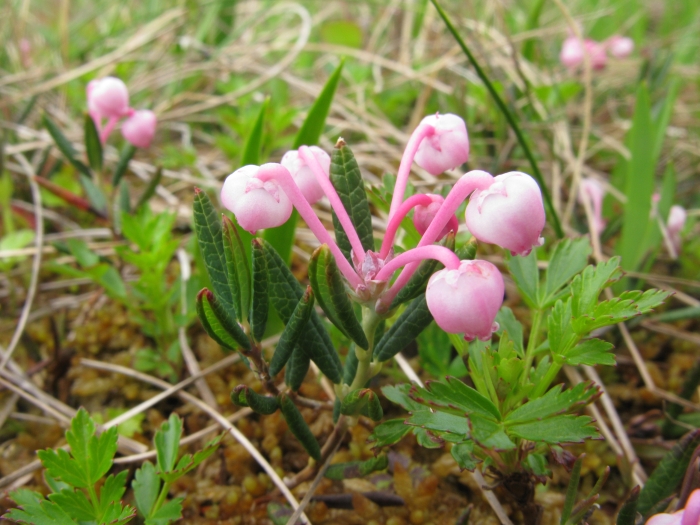Bog Rosemary
(Andromeda polifolia)
Bog Rosemary (Andromeda polifolia)
/
/

Qwert1234
CC BY-SA 3.0











































































Estimated Native Range
Summary
Bog Rosemary is valued for its hardiness in cold climates and its preference for acidic, moist conditions, making it a suitable choice for bog gardens and waterside plantings. It is also used in rock gardens and as ground cover in acidic soil areas. The cultivars ’Compacta’ and ’Macrophylla’ have been awarded the Royal Horticultural Society’s Award of Garden Merit, indicating their exceptional performance in gardens. While it thrives in full sun, it can also tolerate part shade, and requires consistently moist to wet soil conditions with a low pH. It is important to avoid alkaline soils to prevent chlorosis. Bog Rosemary can be susceptible to fungal diseases in conditions of poor air circulation or overly wet soil.CC BY-SA 4.0
Plant Description
- Plant Type: Subshrub, Shrub
- Height: 1-1.5 feet
- Width: 2-3 feet
- Growth Rate: Slow
- Flower Color: Pink, White
- Flowering Season: Spring
- Leaf Retention: Evergreen
Growth Requirements
- Sun: Full Sun, Part Shade
- Water: High
- Drainage: Slow, Standing
Common Uses
Bank Stabilization, Bee Garden, Border Plant, Deer Resistant, Low Maintenance, Potted Plant, Rock Garden, Showy Flowers, Water Garden
Natural Habitat
Peat bogs, marshes, and wetlands across northern Europe, Asia, and North America
Other Names
Common Names: Bog-Rosemary, Marsh Andromeda, Marsh Holy-Rose, Marsh Holywort, Dwarf Bog Rosemary, Marsh Holy Rose, Northern Bog Rosemary, Rosmarinlyng, Rosmarinheide, Polei-Gränke
Scientific Names: , Andromeda polifolia, Andromeda polifolia var. latifolia, Andromeda polifolia subsp. pumila, Andromeda canescens, Andromeda polifolia var. media, Andromeda glaucifolia, Andromeda polifolia f. acerosa, Andromeda polifolia var. rosmarinifolia, Andromeda glaucophylla var. latifolia
GBIF Accepted Name: Andromeda polifolia L.